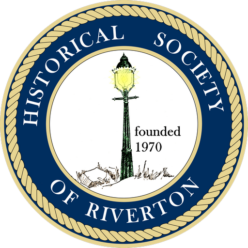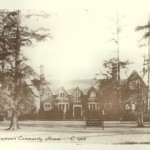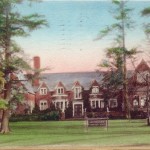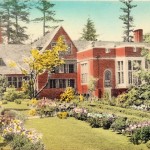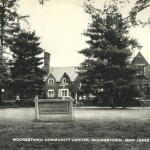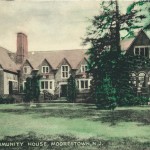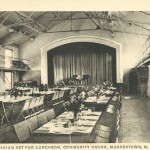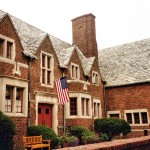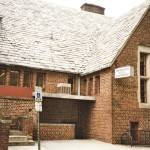Many in this area anxiously held their collective breath last November when news services broadcast the distressing reports that a two-alarm fire had struck their cherished Moorestown Community House.
For those at a distance, you can catch up on old news with these links, or go to the MCH Facebook page for many updates on the building’s recovery.
6abc News – FIREFIGHTERS BATTLE 2-ALARM FIRE AT MOORESTOWN COMMUNITY HOUSE
Courier-Post – Two-alarm fire hits ‘heart of Moorestown’
As news spread of the fire, many folks immediately referenced memories and personal milestone events connected with their beloved Moorestown landmark.
With restoration now well underway, a former Moorestown resident fondly recalls swimming, studying, and working as a young man at the Community House over fifty years ago. -JMc
THE MOORESTOWN COMMUNITY HOUSE:
A “SECOND HOME” FOR MANY OVER THE YEARS
By Harlan B. Radford Jr.
In April of 1954, when I was just 11 years old and in the fifth grade, our family moved from Cinnaminson to a new home on South Washington Avenue in Moorestown. Little did I know at the time that the stately brick and stone Moorestown Community House would soon become my “second home.” That treasured community facility has served not only the needs of my family, but also those of countless others for some 90 years! The following vintage post cards and photographs confirm just how intertwined the place known as “The warm and friendly heart of Moorestown” was in my life.
In 1923, Eldridge Reeves Johnson, the highly successful founder of the Victor Talking Machine Company donated the money to build a community center on a centrally located three-acre parcel of land now known as 16 East Main Street in Moorestown. “The Towers,” Johnson’s Main Street Moorestown home, was originally the home of another renowned Moorestown resident, Samuel Allen, the inventor of the Flexible Flyer sled. It is now the Lutheran Home.
The Moorestown Community House website provides a detailed history of the founding and development of the institution.
The express purpose of this community center was be to provide a “home” to meet the civic, social and recreational needs of individuals, families and organizations. The Moorestown Community House officially opened its doors to the public on April 11, 1926. Various remodel efforts improved handicapped accessibility and converted space for new purposes. Currently, the independent 501(c) 3 non-profit is engaged in a fundraising campaign to raise $2 million that will be used to update and maintain its historic building.
Original key features of the Community House included the Club Room, the Garden Room (added a few years later in 1931), a gymnasium, a swimming pool, tennis courts, and very importantly, an excellent public library (which has since been re-located). A recent MCH brochure assured that the Community House offers space for enjoying a list of “…activities including meetings, seminars, wedding and baby showers, birthday parties, family reunions, anniversary parties, craft bazaars, pool parties, holiday receptions, bridge games, dances and dance lessons, dramas, lap swimming, therapeutic water exercise, swimming lessons, basketball, volleyball and much more.”
Various chronologically arranged images related to the Moorestown Community House follow with dates, where available. The first eleven images range from 1928 to the latter 1940s. Scroll down for the photo gallery. Click on images for larger views.
Figure 1: a piece of writing stationery features a circa 1928 view of the Moorestown Community House.
Figure 2: a RPPC, or real photo post card, mailed and postmarked APR 18, 1931.
Figure 3: an attractive “hand colored” post card postmarked Dec. 21, 1937, with this hand-written message, “We are proud of our Community House. So much goes on there too. Friends Sewing Group meet there every week during sewing season. This is the view from the street side. Garden is (sic) back.”
Figure 4: a hand-colored item shows the beautifully tended gardens located in the rear of the Community House.
Figure 5: a monotone image of the same garden view shown in the previous post card.
Figure 6: a RPPC bearing a postmark dated APR 22, 1940.
Figure 7: another view in black and white.
Figure 8: a hand-colored postcard, not postally used.
Figure 9: shows a JUL 16, 1948 postmark.
Figure 10: interior view of the “gymnasium set for luncheon,” printed in France. Note the elevated tiers, or balconies, on both sides of the gym for spectator viewing of basketball games, and the raised stage with curtains and piano.
Figure 11: a post card, also produced in France, shows an interior view of “the corner of the woman’s club” located in the front northeast corner of the Moorestown Community House.
From the mid-1950s to 1961, the Community House became a very important part of my junior and senior high school years. Frequently, my classmates and I after school would go to the public library at the Community House to study. I vividly remember the centrally located circulation desk, the extensive Dewey Decimal call numbered card catalog with its multitude of drawers, numerous tables and chairs on the first floor, and a smaller upper section with some comfy easy chairs for reading. Books were accessible on both levels and all I can say is they just don’t build such quaint libraries like that anymore! Unfortunately, I have never seen any post card views of the inside of the Community House Library.
If MCH became my second home, then some acquaintances I made there became the second family that always made me feel welcome there. Hannah Severns was head librarian at the time. The always warm and friendly Mrs. Connolly served as receptionist at the main lobby desk. Dolores Wolfram, cashier for the public swim sessions, would go on to work 50 years at the Community House. The most personable and unforgettable Walter W. Kanigowski worked as a lifeguard and a very popular swimming instructor for young and the old alike,
The countless hours I spent swimming at the Community House pool during the 1950s are deeply etched in my memory banks. Many a time I would go to the Community House swimming pool to swim on Friday evenings from 7-pm and Saturday afternoons from 2-pm. Upon entering Moorestown High School, I became a member of the boys’ swimming team, and for the next four years from 1957 to 1961, all our practice sessions as well as all our home swimming meets took place at the Community House pool.
The 20-yard pool featured a one-meter diving board and consisted of four very narrow lanes. There were no starting blocks at that time and I do not recall anyone ever wearing swim goggles. How we ever managed to swim so much without the aid of swim goggles is beyond me! However, nose clips were available, generally used by the backstroke swimmers. We conducted our practices with kick-boards, or flutter-boards. I distinctly remember how very choppy the water was when we conducted our practices or when swim meets were held. What a contrast to competitive swimming today!
What exciting times we had competing with the teams in our South Jersey Swimming League including Merchantville, Delaware Township, Haddon Heights, Woodrow Wilson, and Camden Vocational. Both the boys’ and the girls’ swim practices and home swim meets were held at separate times at the Community House pool.
All in all, the Community House pool particularly got a great deal of use during swim season between the months of November and early March. It took a great deal of planning, scheduling, and coordination to make these two programs possible and so successful. We Moorestonians were extremely fortunate to have our own town swimming pool as very few high schools in our area at that time had such facilities.
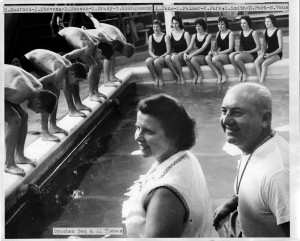
Figure 12: a posed press photograph taken in 1960 shows Bea and Albert Thomas, Moorestown High School’s girls and boys swim coaches, flanked by some team members along the sides of the Community House pool.

Figure 13: another posed press photo taken at the Moorestown Community House swimming pool shows three members in starting positions, including me, from the 1960 swim team.
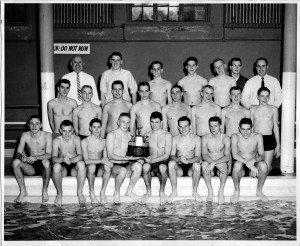
Figure 14: the entire 1959-1960 Moorestown High School Boys’ Swim Team proudly displays some recently won and prestigious hardware at the MCH Pool. Team co-captains Harlan Radford and Donald Munson hold the trophy won during the 28th Annual New Jersey State Swimming Championships (Class B) held at Princeton University in March 1960. A proud moment, to say the least!
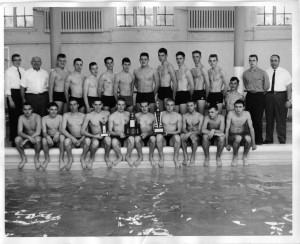
Figure 15: the end of the 1960-1961 season finds the boys’ swim team at the Community House showing off more hardware including 3 new trophies for the high school’s trophy cabinet. Seniors and co-captains Harlan Radford and Bill Brady hold the team’s second consecutive New Jersey State Swimming (29th Annual) Championship Trophy (Class B), which was won at Princeton’s Dillon Pool on March 4, 1961. Such honors attest to the ongoing strength and depth of the Moorestown High School Boys’ Swimming Program at that time.
From 1959 into 1961, I worked at the Community House Pool as a Certified Red Cross Life Guard and spent many hours life guarding at the public swim sessions. When I worked five hours at $2.00 an hour in a weekend, I earned $10.00 – very generous pay for a high schooler back at that time. For that opportunity, I was most appreciative.
Clearly, the Moorestown Community House was important to me growing up.
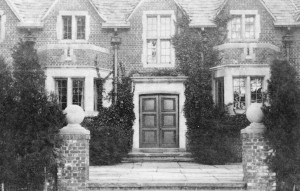
Figure 16: a picture post card mailed by the Moorestown Community House to solicit donations, postmarked MAY 21, 1951. The printed message reads, “Look familiar? Of course! It’s the Community House – the warm and friendly heart of Moorestown. It’s done a lot for you and your family. Now it needs your help. Give generously to the Community House Restoration Fund – May 19 to June 1.” Signed, “Your Community House.” Compare the ivy growth in this and the next image.
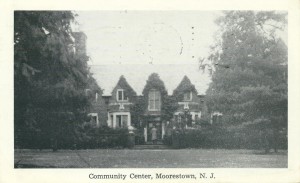
Figure 17: this photo view post card postmarked AUG 4, 1953 attests to the ivy’s advance up the brickwork.
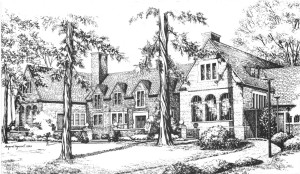
Figure 18: The Trustees and Staff of the Community House thanked a patron for her gift and generous support with this postcard mailed JUL 12, 1995, using a Margaret Ingersoll pen and ink sketch of the Community House.
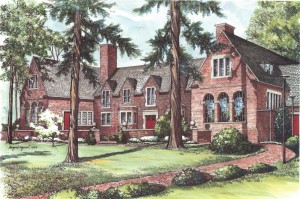
Figure 19: Freelance artist Margaret Ingersoll also made this color rendition used on writing stationery dated 1994, which features the Community House handsome landscaping and greenery. A Past President of the Historical Society Moorestown and Moorestown’s 2003 Citizen of the Year, Midge Ingersoll is a relentless historic presevationist.
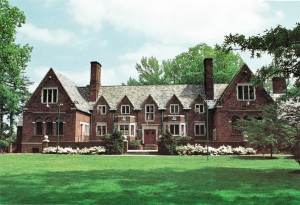
Figure 20: On APR 28, 1998 the Trustees and Staff of the Community House mailed this 1996 copyright full-color contemporary post card to thank a loyal patron once again for her donation and generous support.
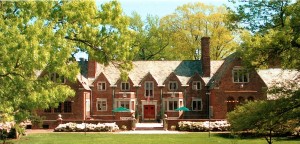
Figure 21: In 2004, this full-color photo was the cover for a mailer that listed many things that went on at the Community House that year. “…in 2004 total functions in meeting rooms exceeded 1,200. There were more than 1,250 separate basketball rentals and more than 2,000 hours of pool use.” Also noted were, “75 pool parties for children, 25 bridal and baby showers, 15 piano recitals, 5 wedding receptions and at least 900 meetings of 97 different clubs and organizations.” Furthermore, “There were provided senior day care, a school for children with language-based learning difficulties, and a support organization for families affected by the sudden death of a loved one.”
The Moorestown Community House, is and has been part of the lives of so many people and groups over all the years! Thanks to quick action on the part of firefighters that November night the Moorestown Community House will continue to do so as it supports more than 70 community organizations. To make a contribution to its restoration, visit ourcommunityhouse.com.
Did this photo essay spark a memory for you? Let us hear from you!
P.S. A few pix form the author’s photo album
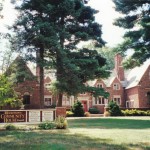
Fig. 22: Snapped c.2005. Shown here is a delightful mid-summer view of the Community House with the prominent signage in front featuring the following organizations: The Tender, Inc – Social Daycare for the Elderly; Visiting Nurse Association; Big Brothers/Big Sisters; and Samaritan Hospice.
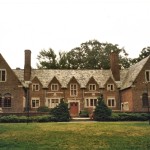
Fig. 23: MCH front entrance. Notice there is no ivy climbing the brick face surrounding the main doorway. The years have shown how shrewd Mr. Johnson was in insisting on a low-maintenance brick exterior.
Fig. 24: Close-up view of the front entrance of this classic building.
Fig. 25: We see the north-side entrances to both the Community House kitchen (via the upper level stairway) and the swimming pool/locker rooms (via the lower level stairwell) here. The ever-popular corner Woman’s Club room and windows jut out with the peaked roof to the right. A bicycle rack is in the foreground.
Your message has been sent
March 5, 2016 at 4:02 pm, Comment shared from Paul W. Schopp: While I have memories of being in the Community House for various functions, I thought folks would be interested in a unique story that I heard first-hand back in the early 1980s. At the time, I resided in a high-rise apartment building in the Westmont section of Haddon Township. Across the hall lived an elderly man named Russell Colgan who had recently lost his wife. Russell had served for many years as a police officer on the Delaware River/Benjamin Franklin Bridge. As a young man, however, he worked for his father, Charles Colgan, a master bricklayer from Southwest Philadelphia. When Moorestown Township contracted to have the Community House constructed, Charles Colgan received the contract and Russell regaled me with his memories of working on the building. Many folks celebrate Eldridge Johnson for his philanthropy in donating the funds for the building—and rightly so—but few if any people know the name of the contractor who actually laid the brick to make the building what it remains today: a beautiful architectural celebration of all things Moorestown!
